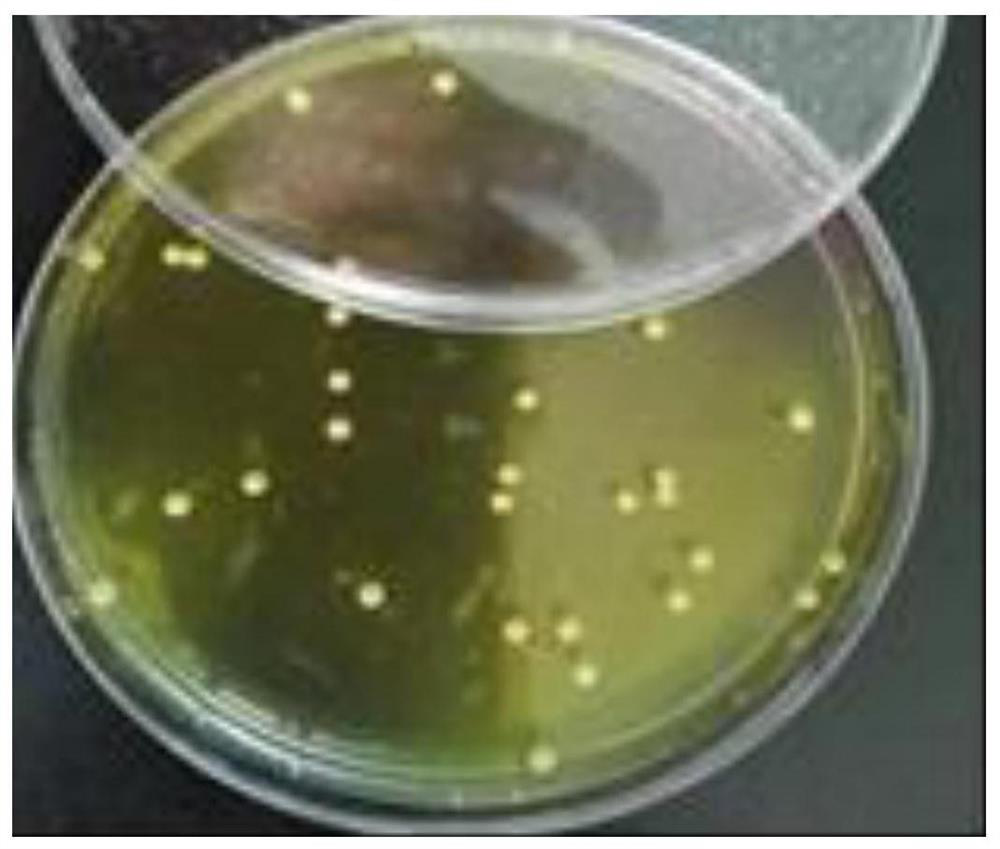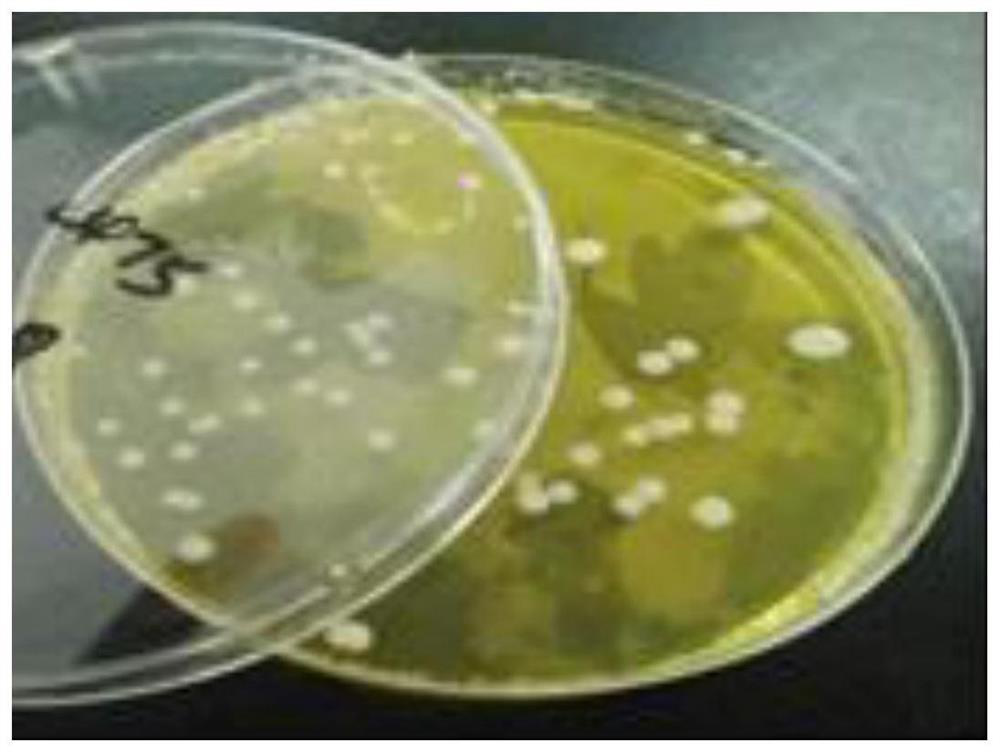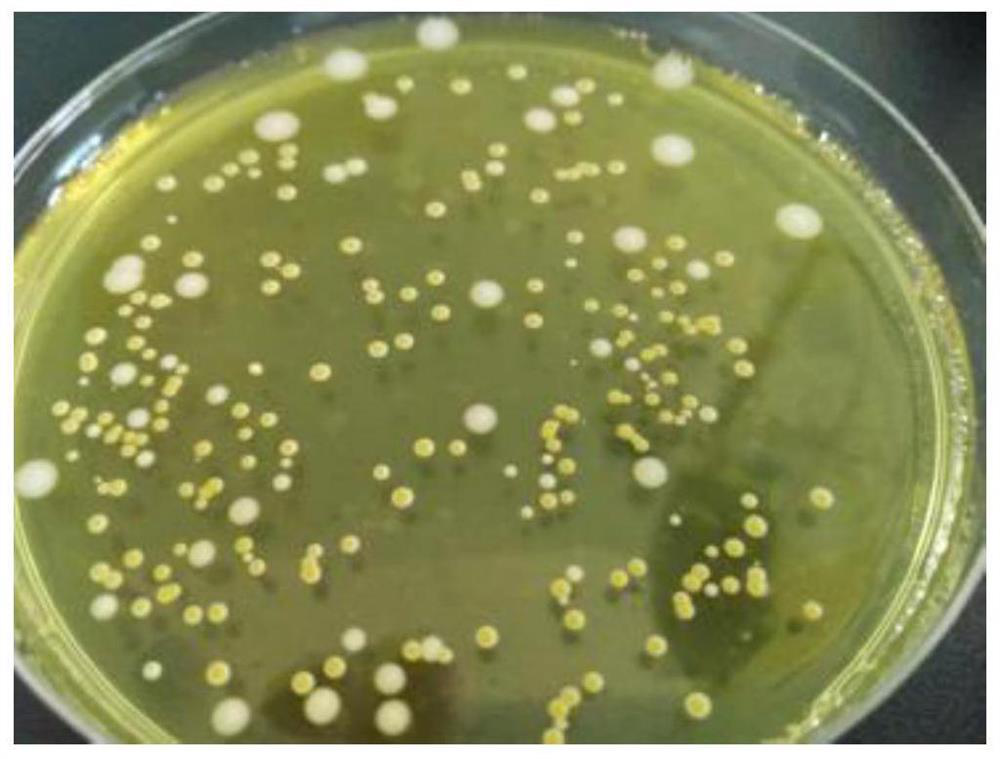A detection method for cheese strains mixed in Lactobacillus plantarum
A technology of Lactobacillus plantarum and a detection method, which is applied in the detection field of Lactobacillus plantarum mixed with cheese strains, can solve problems such as the detection of cheese strains that cannot be mixed, and achieve the effects of being convenient for detection and beneficial to value-added.
- Summary
- Abstract
- Description
- Claims
- Application Information
AI Technical Summary
Problems solved by technology
Method used
Image
Examples
Embodiment 1
[0041] A kind of liquid culture medium and culture method:
[0042] 1) The liquid culture medium is composed of: skim milk powder content 12%, water 88%;
[0043] 2) Accurately weigh skimmed milk powder and add it to softened water at 45°C-50°C, stir for 12 minutes, let stand for hydration for 20 minutes, heat in a humid heat sterilization pot at 115°C for 20 minutes, and set aside.
[0044] 3) Training method:
[0045] First dilute the bacteria powder No. 1 to be tested into a 10-fold dilution, then absorb 1ml of the dilution of the bacteria powder and add it to 300ml of liquid medium, shake well, expand the culture in a constant temperature incubator at 37°C for 74 hours, shake to fully break the clot , place and culture at room temperature (20°C-25°C) for 16 hours, shake and break, and set aside;
[0046] Prepare Chromogenic Medium:
[0047] 1) The solid chromogenic medium consists of:
[0048] A. As a carbon source, only maltose is contained, wherein the mass of the malt...
Embodiment 2
[0059] A kind of liquid culture medium and culture method:
[0060] 1) The liquid culture medium is composed of: skim milk powder content 8%, water 92%;
[0061] 2) Accurately weigh skimmed milk powder and add it to softened water at 45°C-50°C, stir for 15 minutes, let stand for hydration for 20 minutes, heat in a humid heat sterilization pot at 115°C for 20 minutes, and set aside.
[0062] 3) Training method:
[0063] First dilute the bacteria powder No. 2 to be tested into a 10-fold dilution, then absorb 1ml of the dilution of the bacteria powder and add it to 300ml of liquid medium, shake well, expand the cultivation in a constant temperature incubator at 37°C for 70 hours, shake to fully break the clot , cultured at room temperature (20°C-25°C) for 24 hours, shaken and crushed, and set aside;
[0064] Prepare Chromogenic Medium:
[0065] 1) The solid chromogenic medium consists of:
[0066] A. As a carbon source, only maltose is contained, wherein the mass of the malto...
Embodiment 3
[0077] A kind of liquid culture medium and culture method:
[0078] 1) The liquid medium is composed of: skim milk powder content 10%, water 90%;
[0079] 2) Accurately weigh skimmed milk powder and add it to softened water at 45°C-50°C, stir for 10 minutes, let stand for hydration for 20 minutes, heat in a humid heat sterilization pot at 115°C for 20 minutes, and set aside.
[0080] 3) Training method:
[0081] First dilute the bacteria powder No. 3 to be tested into a 10-fold dilution, then absorb 1ml of the dilution of the bacteria powder and add it to 300ml of liquid medium, shake well, expand the culture in a constant temperature incubator at 37°C for 72 hours, shake to fully break the clot , place and culture at room temperature (20°C-25°C) for 20 hours, shake and break, and set aside;
[0082] Prepare Chromogenic Medium:
[0083] 1) The solid chromogenic medium consists of:
[0084] A. As a carbon source, only maltose is contained, wherein the mass of the maltose is...
PUM
 Login to View More
Login to View More Abstract
Description
Claims
Application Information
 Login to View More
Login to View More - R&D
- Intellectual Property
- Life Sciences
- Materials
- Tech Scout
- Unparalleled Data Quality
- Higher Quality Content
- 60% Fewer Hallucinations
Browse by: Latest US Patents, China's latest patents, Technical Efficacy Thesaurus, Application Domain, Technology Topic, Popular Technical Reports.
© 2025 PatSnap. All rights reserved.Legal|Privacy policy|Modern Slavery Act Transparency Statement|Sitemap|About US| Contact US: help@patsnap.com



